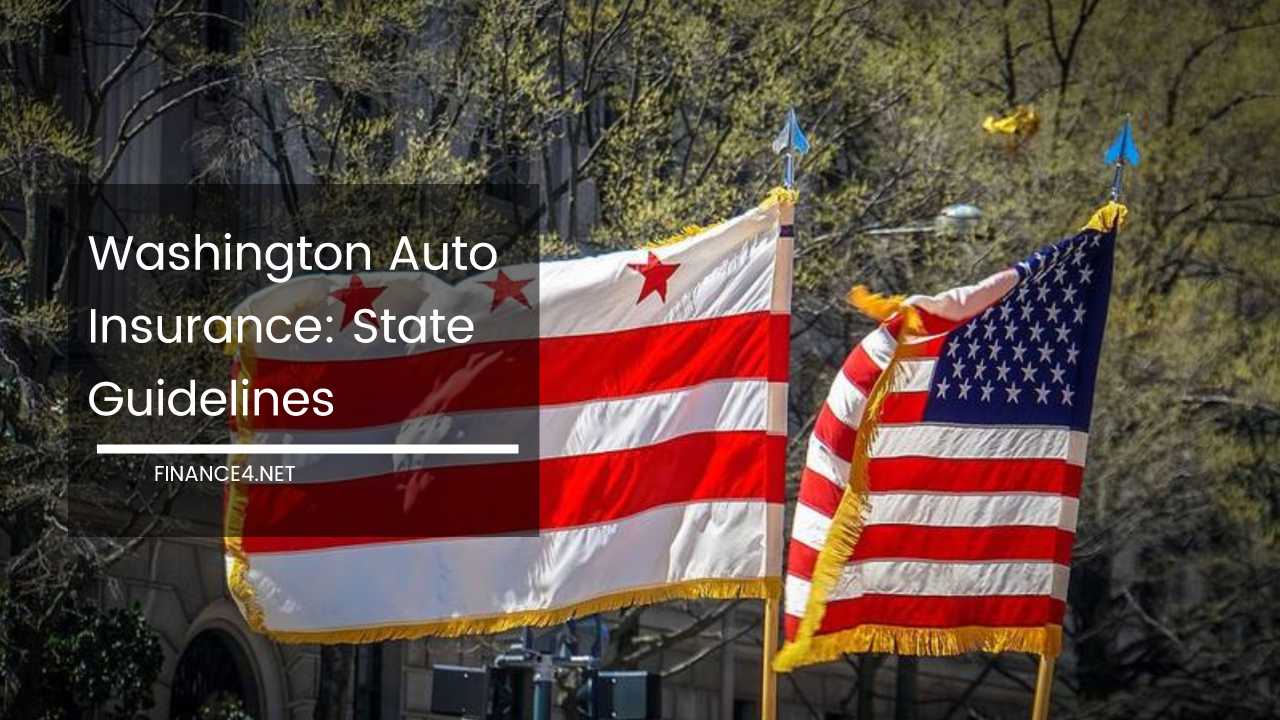Washington Car Insurance Explained: Minimums vs. Full Protection

Washington Auto Insurance: Navigate the Road with Confidence
Cruising down the scenic byways of Washington, navigating bustling city streets, or exploring the rugged coastline – driving in the Evergreen State offers a unique blend of freedom and adventure.
But before hitting the gas, it’s crucial to understand Washington’s auto insurance requirements. This comprehensive guide equips you with the knowledge to navigate state guidelines, choose the right coverage for your needs, and ensure financial protection behind the wheel.
Demystifying Washington’s Mandatory Liability Insurance
Washington enforces a mandatory liability insurance scheme. This means every driver must carry minimum coverage to operate a vehicle legally.
Liability insurance acts as a financial safety net, kicking in if you cause an accident and are held liable for damages. It covers two primary aspects:
- Bodily Injury Liability: This coverage pays for medical expenses, lost wages, and pain and suffering of individuals you injure in an accident. Washington mandates a minimum of $25,000 per person and $50,000 per accident.
- Property Damage Liability: This covers repairs or replacement of property you damage in an accident, such as another driver’s car or a damaged fence. The minimum required coverage is $10,000.
Meeting the Minimum vs. Finding Peace of Mind: While the minimum liability coverage allows you to drive legally, it’s important to understand it might not provide sufficient protection in all scenarios. Here’s why:
- The Escalating Cost of Medical Care: Medical bills can skyrocket in the aftermath of a serious accident. $25,000 per person might not cover extensive medical treatment, especially if multiple individuals are injured. Residual medical costs could become a significant financial burden.
- Lawsuit Protection: If the damages caused by your actions exceed your coverage limits, you could be sued for the remaining balance. This could lead to financial hardship, impacting your savings, investments, and even your home.
- Limited Property Damage Coverage: $10,000 might not suffice to repair or replace a newer car or damaged property, especially if the accident involves expensive vehicles or structures. Consider the rising cost of repairs and potential for property damage claims when evaluating coverage limits.
Beyond the Minimum: Exploring Additional Coverage Options
Washington allows you to customize your auto insurance beyond the minimum liability requirements. Here’s a breakdown of valuable add-on coverages to consider:
- Collision Coverage: This coverage reimburses you for repairs or replaces your vehicle if it’s damaged in a collision with another object or vehicle.
- Comprehensive Coverage: This protects your car against a wider range of perils beyond collisions, including theft, vandalism, fire, weather events (like hail or flooding), and animal collisions.
- Underinsured/Uninsured Motorist Coverage: This vital coverage protects you financially if you’re involved in an accident caused by a driver with inadequate or no insurance. It covers medical expenses, lost wages, and car repairs up to your policy limits.
- Personal Injury Protection (PIP): This coverage pays for medical expenses, lost wages, and other covered costs, regardless of who is at fault in the accident. PIP can be particularly beneficial if you sustain injuries and require medical care or lose income due to the accident.
Finding the Coverage Sweet Spot: Choosing the right insurance plan involves striking a balance between affordability and protection.
Discussing your needs with a licensed insurance agent is highly recommended. They can assess your driving habits, vehicle value, assets, and financial situation.
Based on this information, they can recommend a personalized insurance plan with appropriate coverage limits and deductibles (the amount you pay out of pocket before insurance kicks in).
Understanding Deductibles: A deductible is the portion of the repair or replacement cost you’re responsible for before your insurance coverage applies.
Choosing a higher deductible can lower your insurance premiums. However, ensure you can comfortably afford the deductible amount in case of an accident.
Don’t Skimp on Coverage: While the allure of lower premiums might be tempting, remember that skimping on coverage can leave you financially exposed in the event of an accident. Consider factors like your financial security, car’s value, potential medical expenses, and your risk tolerance when selecting coverage options.
Safeguard Your Wallet: Additional Tips for Washington Drivers
Equipping yourself with the right insurance is crucial, but it’s just one piece of the puzzle. Here are some additional pointers to ensure a smooth and safe driving experience in Washington:
- Maintain a Clean Driving Record: Traffic violations and accidents significantly increase your insurance premiums. Develop safe driving habits like avoiding distractions, obeying traffic signals, and maintaining a safe following distance. A clean driving record translates to lower insurance costs.
- Become a Comparison Shopping Pro: Don’t settle for the first insurance company you encounter. The Washington State Office of the Insurance Commissioner (OIC) website https://www.insurance.wa.gov/ provides a helpful tool to compare rates from various insurance providers. Utilize this resource to your advantage and obtain quotes from multiple companies.
- Unlock Valuable Discounts: Many insurance companies offer attractive discounts for responsible drivers. Here are some common examples:
-
- Good Driver Discount: A clean driving record with no accidents or violations for a set period qualifies you for this discount.
- Low Mileage Discount: If you drive less than the average annual mileage, you can potentially benefit from this discount.
- Multi-Car Discount: Insuring multiple vehicles with the same company often leads to a discount.
- Mature Driver Discount: Drivers aged 55 and above might qualify for discounts based on their experience and potentially lower risk profile.
- Defensive Driving Course Completion Discount: Completing a state-approved defensive driving course can lead to a reduction in your premiums.
- Student Discounts: Good grades for young drivers can translate to lower insurance costs.
-
Embrace Telematics Programs: Some insurance companies offer telematics programs that track your driving habits through a mobile app or device installed in your car. Safe driving behaviors like maintaining a safe speed, avoiding harsh braking, and minimizing nighttime driving can lead to lower premiums through these programs.
-
Stay Updated on Regulations: Washington’s auto insurance laws may change periodically. Staying informed by checking the Washington State Department of Licensing (DOL) website [https://dol.wa.gov/driver-licenses-and-permits/renew-or-replace-driver-license/renew-driver-license] ensures you comply with the latest regulations.
Understanding SR-22 Filings (Optional Section)
- SR-22 Filings (Optional): In certain situations, Washington requires drivers to file an SR-22 form with the DOL. An SR-22 is a certificate of financial responsibility that proves you maintain the minimum required liability insurance. You may need to file an SR-22 if your license is suspended for driving without insurance (DUI) or multiple driving violations. Maintaining continuous insurance coverage becomes mandatory after filing an SR-22, with the filing typically remaining in effect for three years.
Final Thoughts: Drive with Confidence, Drive with Protection
Equipping yourself with the knowledge of Washington’s auto insurance requirements and exploring various coverage options empowers you to make informed decisions.
Choosing the right insurance plan provides peace of mind and safeguards you from unforeseen circumstances on the road.
By following safe driving practices, maintaining a clean record, and taking advantage of available discounts, you can navigate Washington’s roadways with confidence and financial security.
Remember, a responsible approach to car insurance goes hand-in-hand with safe driving habits, ensuring a smooth and enjoyable driving experience in the beautiful Evergreen State.
Image Credit: WikiMedia



